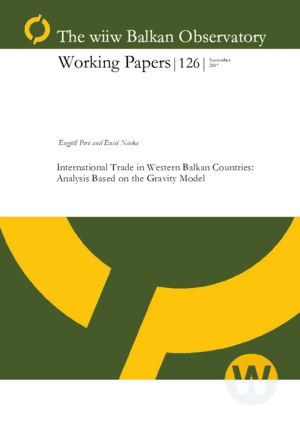International Trade in Western Balkan Countries: Analysis Based on the Gravity Model
Eniel Ninka and Engjell Pere
wiiw Balkan Observatory Working Paper No. 126, November 2017
Abstract
We adopt the gravity model to analyse the international trade relations of Western Balkan (WB) countries and of the WB region as a whole, using WIIW and World Bank data, over a period of 20 years (1995-2014).
Data show a tendency toward better integration of WB countries with the world economy, increased openness of their economies, persistence of their trade deficits, and, for most of them, an improvement of the coverage ratio.
For the region as a whole, the volume of international trade outpaced that of intra-regional trade reaching, in 2014, a difference of nearly 5 times. The main partner for the region remains the European Union, particularly Germany and Italy.
The gravity model of exports of the WB region shows that its exports are positively impacted by the common language and common borders with third countries, by trade with European Union, and large and highly industrialized countries, while distance and region’s level of per capita Gross Domestic Product both have a negative impact.
Considering the imports, the model shows that they are positively impacted by existence of common borders and language with the region, and by region’s and partner countries’ level of economic development, while the distance has again a negative impact.
Keywords: Western Balkans, International trade relations, Gravity model, Economic integration
JEL classification: C59, F14, F15
Countries covered: Albania, Bosnia and Herzegovina, Croatia, Kosovo, North Macedonia, Montenegro, Serbia, Western Balkans
Research Areas: Macroeconomic Analysis and Policy, International Trade, Competitiveness and FDI
